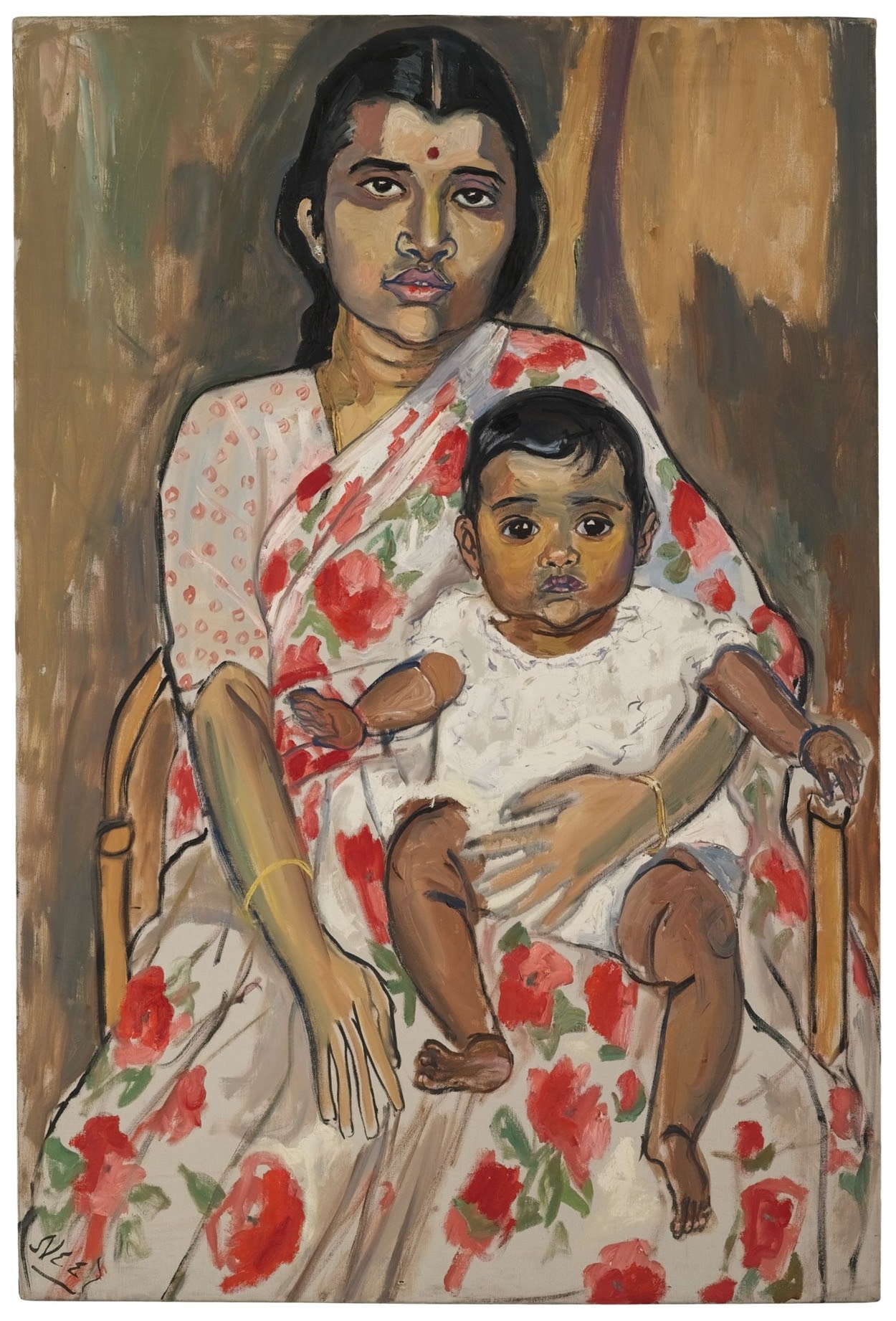Alice Neel

Mother and Child is among Neel’s many portraits of motherhood. For the artist, it was an emotionally fraught theme, yet one she felt drawn to. Having lost her first child to diphtheria and her second to Cuba (the young girl taken by her father under false pretences), Neel had suffered much as a mother. It is perhaps unsurprising then, that for all the apparent tenderness of Neel’s motherhood portraits, something like apprehension colours the paint. Like Mother and Child, these paintings appear as much a portrait of the sitters as an image of the artist, her fears and desires. To Neel, no painting was without her presence. “The self,” she said, “we have it like an albatross around the neck.”
b.1900, Merion Square; d.1984, New York
Alice Neel found fame late in life. It was only in the late 1960s, buoyed by the counterculture of the time, that she began making a living as an artist. Her figurative paintings – insensible to modernist fashions – had until then been dismissed as naïve and sentimental. Yet it was this commitment to figuration that established Neel as a foremost American painter. She became an incidental chronicler of New York, the city where she lived and painted for six decades. “What a treasure of goodness / And life shambles,” she wrote in a poem to Spanish Harlem, “Your poverty and your loves.” All these things, this goodness and its shambles, found expression on Neel’s canvas. While she painted landscapes and still lives, it is her portraits for which she is remembered, with their stark intimacy and feeling, picturing the wretched and well-off, the famous and forgotten, friends and strangers. Over the many years, her work became a history of the city’s cultural ascendancy, with all its eccentricities and curiosities, its vulnerabilities and vanities. This was New York before Aids, before 9/11, before the subways were safe – a city of beatniks and broken glass.